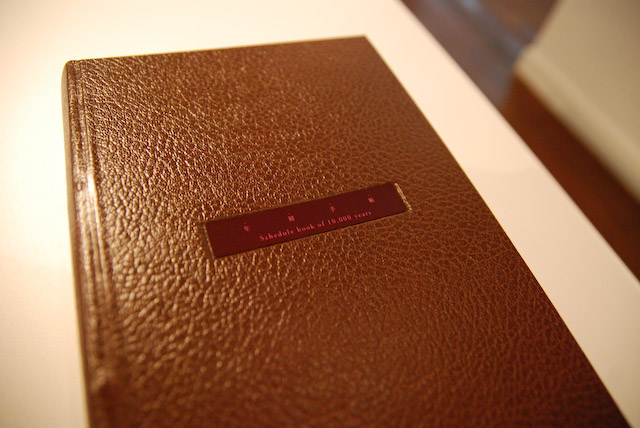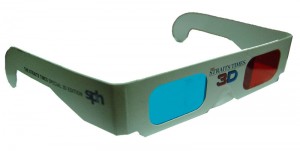In the past few months, Borders Bookshop in Singapore has literally “cheapen” books with its seemingly never-ending weekly offers. It’s got me really curious about what is actually going on in Borders. Is it closing down? Is this a sign that people will no longer pay for good books? Are books going extinct?
While I have no idea if Borders is closing down (my guess: yes), I’ll suggest you attend a book art exhibition just a 5 minute walk from the Borders in Wheelock Place to find answers to my other two questions. In Centre to Periphery at the Japan Creative Centre, you will find no bookshelves. In fact, you might not even find books — those with a cover, spine, page and words on them. Instead, you find yourself lifting up an empty book to capture text projections…
Enlightenment (2009), Goh Qidi Jonathan
… staring into a pinhole camera made out of a book to find out its ending…
Shin Mitsu (2001), Miyuki Kido
… wondering how solid books can be…
The Ground Book (1998), Rie Takeuchi
… seeing a book scene come to life…
 All About Her Story, Masako Kobayashi
All About Her Story, Masako Kobayashi
… going through the “elements” of what makes a book’s character…
The Ele men tal In ter ludes (2009), Hazel Lim
… and contemplating how 10,000 years of life is so efficiently reduced to a tome you can carry home.
Byo-Koku-Tetsu-Cho (2002), Hirose Tsuyoshi
You won’t find any discounts for books at this exhibition organised by the Japan Creative Centre and La Liberia, but you will find, for free, that books are much more than just for your reading pleasure.





